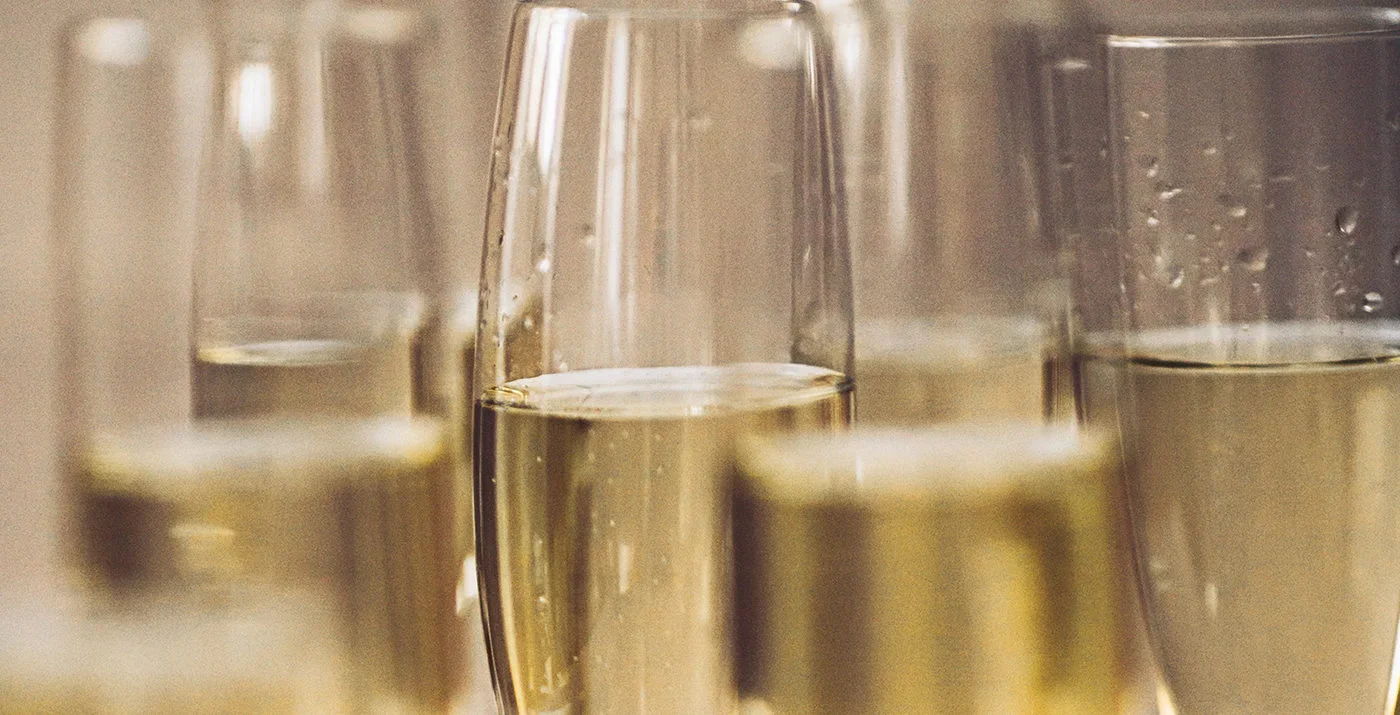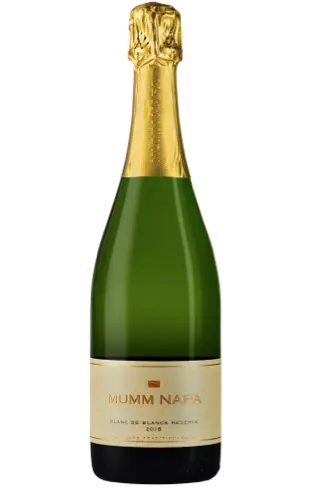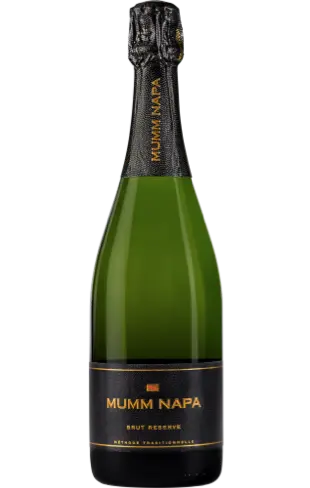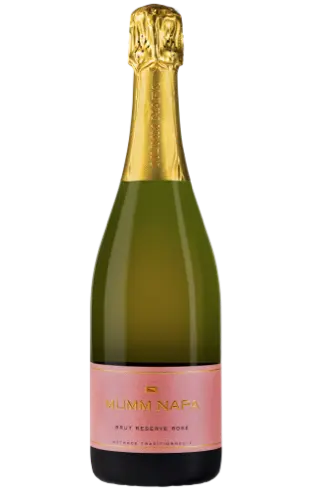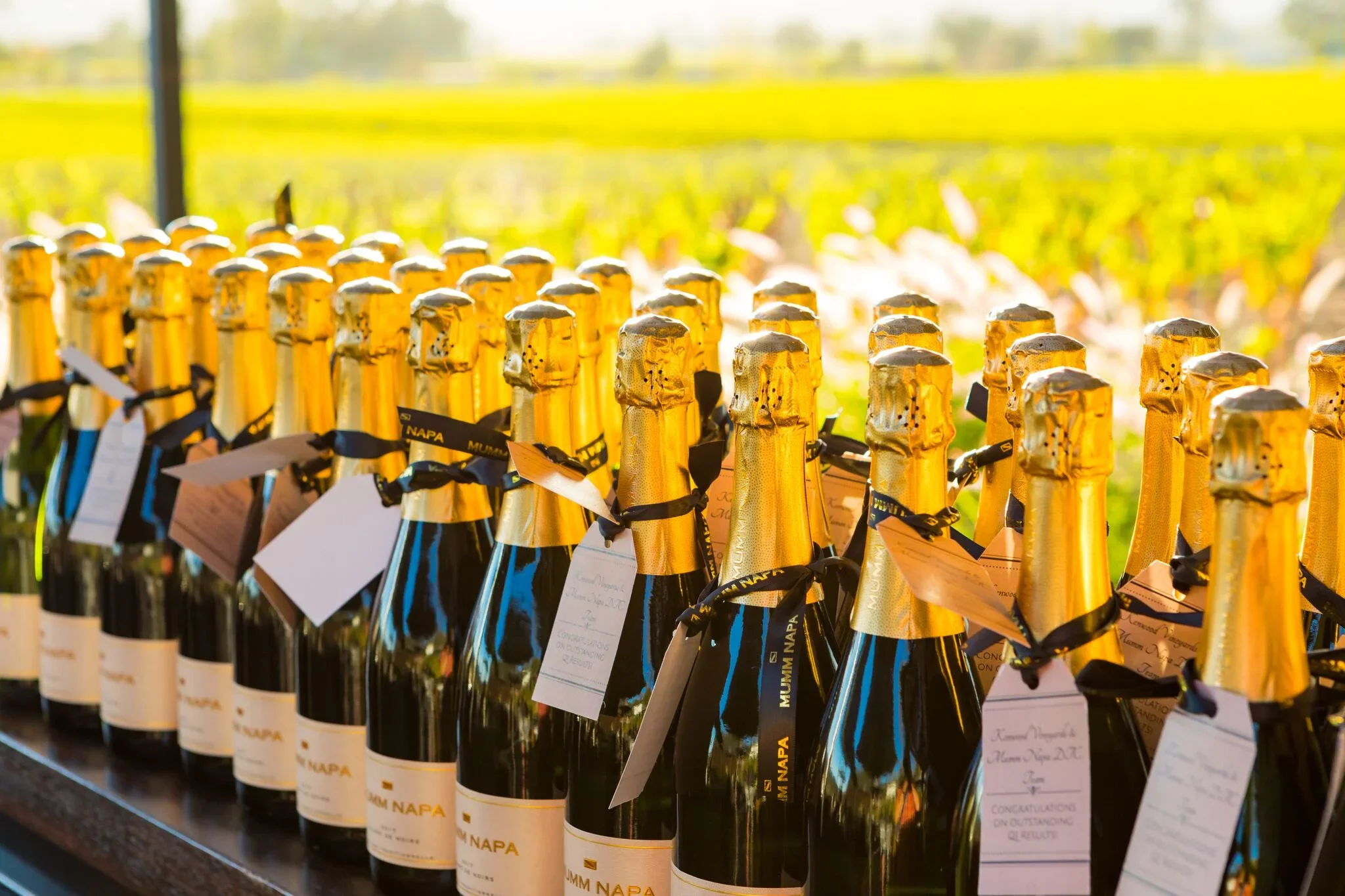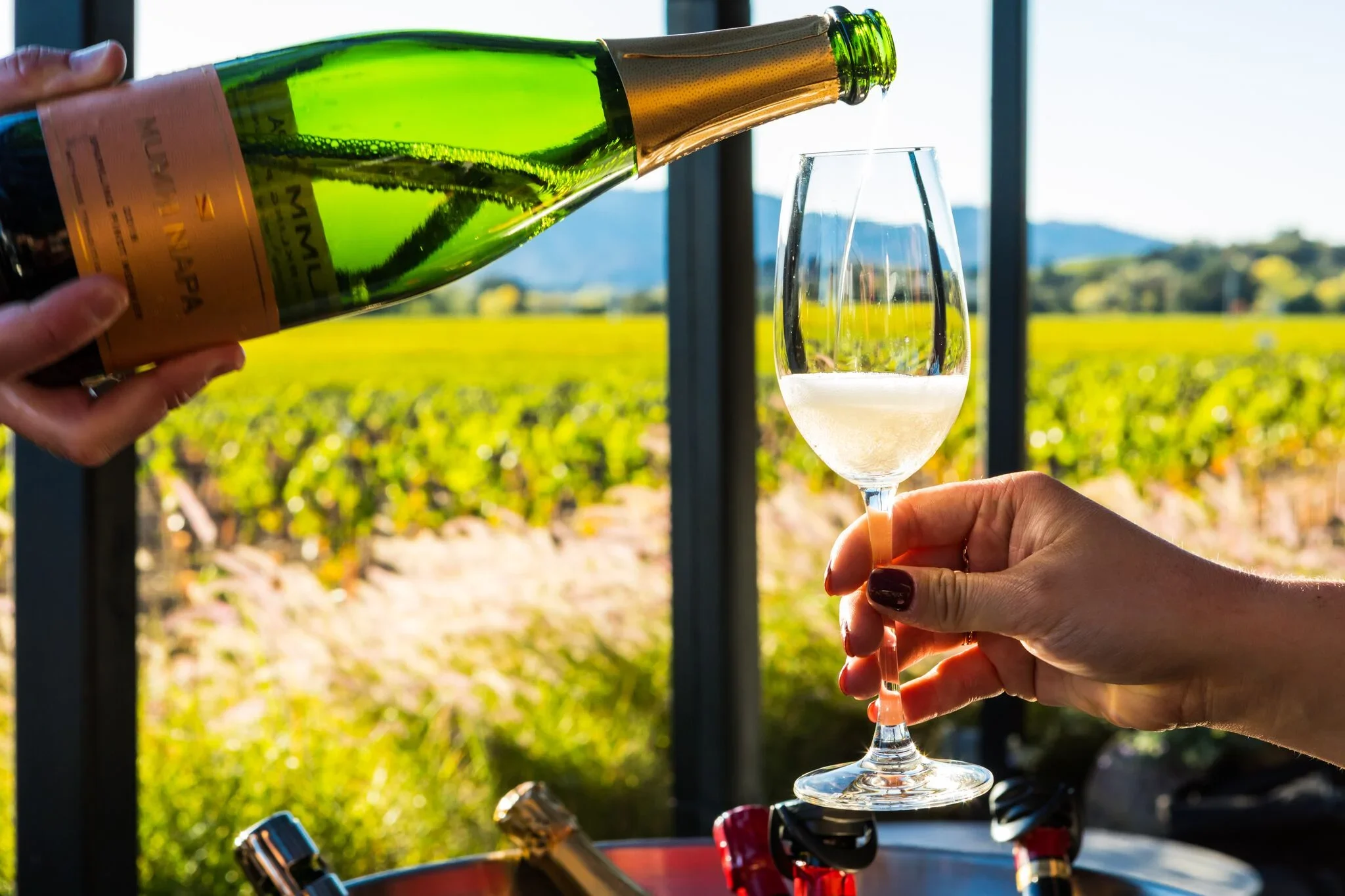Mumm Napa Wine Club Membership, Members have access to exclusive wines and perks, including up to four free tastings per month.
Every sparkling wine connoisseur started as a sparkling wine student. Even if you don’t aspire to become a true expert, a little knowledge may enhance your enjoyment. A good place to start is these ten frequently asked questions (paired, of course, with your own extensive taste testing).
1.What’s the difference between sparkling wine, Champagne, and prosecco?
We call Mumm Napa “sparkling wine” because it’s made in the Napa Valley, but the production process and ingredients are the same used to create the best French Champagnes. Both are crafted using Méthode Traditionnelle. The name Champagne simply refers to sparkling wine from the Champagne region of France. Meanwhile, Prosecco originates in Italy and is made using the Tank Method with prosecco grapes.
2. How does great sparkling wine get its sparkle?
The best sparkling wines, just like the finest French Champagnes, are crafted using the rigorous Méthode Traditionnelle. The bubble magic happens during a second fermentation that takes place in a sealed bottle, when yeast begins to produce natural CO2—a phenomenon known as Prise de Mousse, or “capture the sparkle.”
3. Which grapes are used to make sparkling wine?
Chardonnay, Pinot Noir, and Pinot Meunier are the traditional sparkling wine grape varietals used to varying degrees depending on the style. At Mumm Napa, we sometimes add a little bit of Pinot Gris, a local favorite for a unique California twist on our heritage.
4. What are the different styles of sparkling wine?
Some of the most common types include Extra-Brut (very dry), Brut (dry), Brut Rosé (dry and pink), Blanc de Blancs (dry and white), Sec (lightly sweet), and Demi-Sec (sweet). Most Mumm Napa wines are Brut style, but we have a winery-exclusive Demi-Sec, Sec, Cuvée M and Cuvée M Red.
5. How do red, white, and rosé sparkling wines get their color?
Color is a function primarily of the grape, and can be subtly shifted in the winemaking process. As you might expect, white wines are predominantly made from white grapes (e.g., Chardonnay), though sometimes black grapes (like Pinot Noir or Pinot Meunier) are added, as the juice alone is actually clear. Rosés are made from black grapes, but keep their blush color because grape skins are removed a few hours after contact. Sometimes a little bit of still Pinot Noir wine is added to adjust the color and obtain just the right pink hue. Similarly, the rare red sparklings (like our Sparkling Pinot Noir) are made from black grapes.
6. What’s the best way to open the bottle?
Once you remove the foil and the cage, put one hand firmly on the cork to steady it and the other on the base of the bottle. While keeping the bottle pointed in a safe direction, slowly twist the bottle, not the cork. As the base twists, you should feel the cork loosen, until the eventual pop of success. Done correctly, there shouldn’t be any “shooting” or spillage.
7. What’s the ideal temperature for serving sparkling wine?
It’s best when chilled—think 40 to 45 degrees Fahrenheit, achieved by 30 minutes in ice water or 3 hours in the refrigerator—and poured into a flute or white wine glass. A flute helps preserve the bubbles, while a white wine glass offers a little more breathing room and can open up some beautiful aromas. Pour a small amount into the glass and let it settle before filling the glass three-quarters full. If it’s hot out, lower your pour level to ensure every sip stays at a cooler temperature.
8. How long can a bottle of sparkling wine last?
It depends. As general rule, you should drink most non-vintage sparkling wines within the first few months of purchase. Vintages, like our DVX wines can be enjoyed up to 15 or 20 years after the Harvest vintage. Once popped, we recommend drinking within 3 to 5 hours. Though Mumm Napa bubbly is so delicious, it may disappear quicker.
9. What’s the best method and temperature for storing?
Pick somewhere cool and dark, around 55 degrees Fahrenheit. The cooler temperature allows sparkling to age slowly. Additionally, keep sparkling away from light as much as possible. For horizontal or vertical storage, people often choose to store wines horizontally to keep the cork moist, but that’s not as big of a concern with sparkling because of the pressure of the cork. But to age sparkling for three years or more, your best bet is to store it horizontally.
10. Is sparkling wine meant solely for special occasions?
It’s a bit of a trick question. No, sparkling wine isn’t meant to be opened solely on New Year’s or your wedding day. In fact, Mumm Napa’s goal is to inspire you to enjoy sparkling wines every day, in the same way they’d enjoy sparkling water on a hot day, a cold beer with friends, or a bottle of Chardonnay with dinner. But yes, anytime you introduce sparkling wine into an occasion it will feel special. Whether you’re in the mood for crisp and fresh or bold and toasty, there’s a sparkling wine that’s perfect for any food or occasion.
With this baseline knowledge about sparkling wine, your next assignment is simply to find an occasion that goes better with bubbles.
Our Recommendations
Explore our picks and discover sparkling wines you’ll love.
Featured Articles

Mumm Napa’s Method Behind the Bubbles
At Mumm Napa, we have some strong ideas about what separates a memorable sip of sparkling from an ordinary one—it all starts with winemaking technique.
Newsletter
Join our email newsletter to receive the latest winery updates, limited releases, and exclusive offers.

